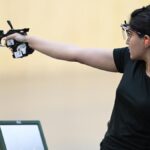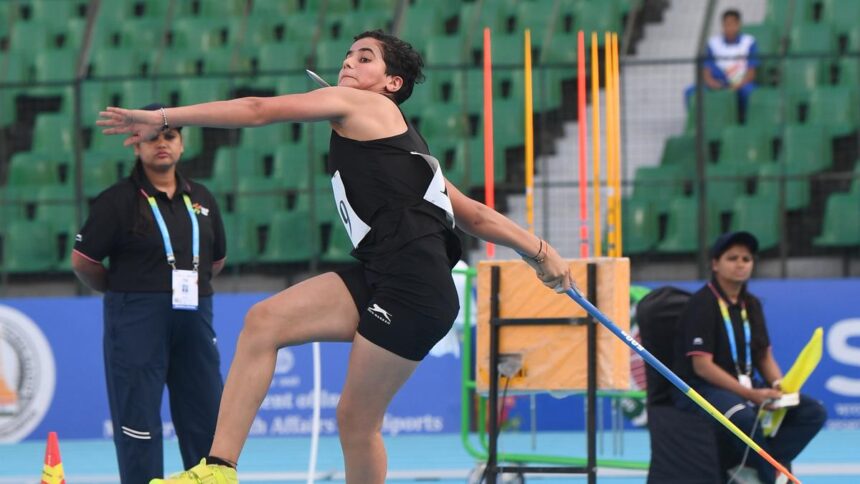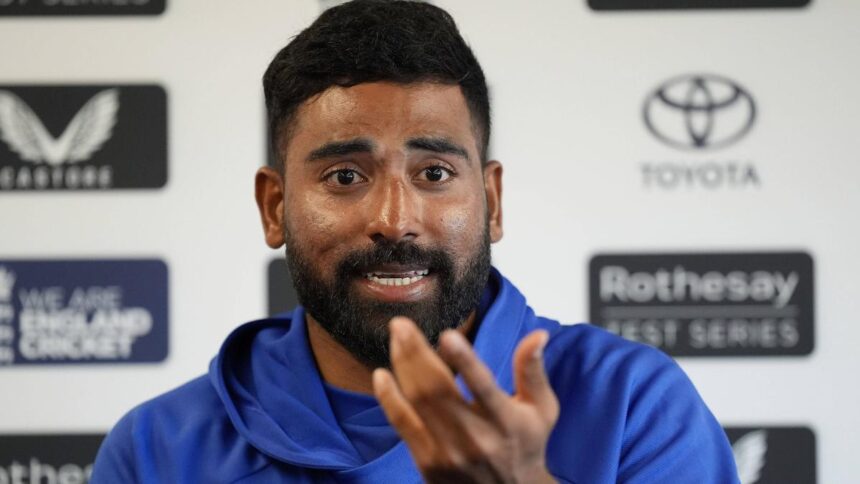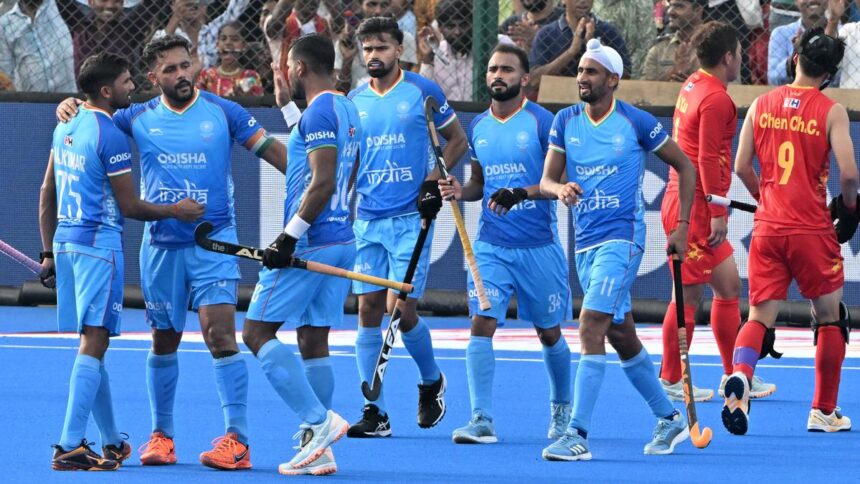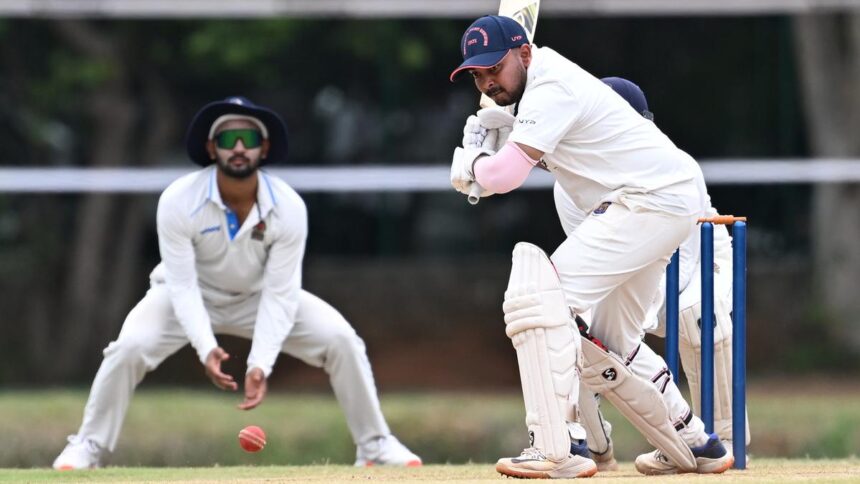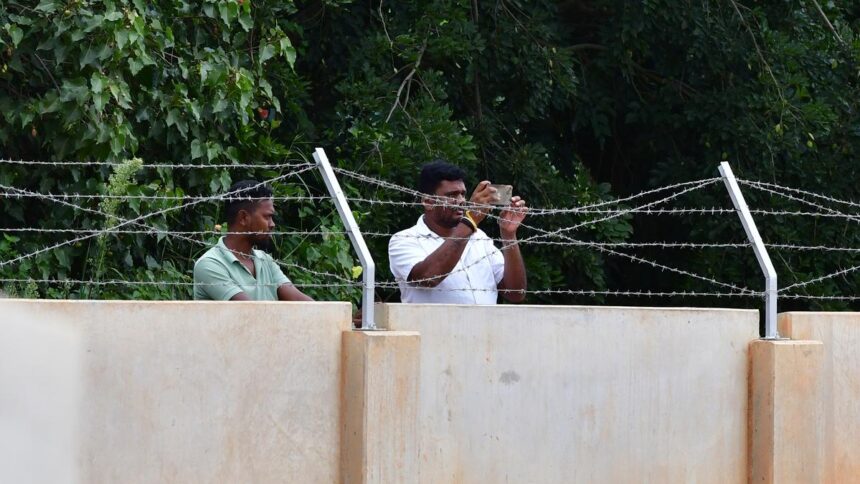His aggression at the table evokes visions of Virat Kohli. So do more than the dozen tattoos he sports.
His unconventional technique reminds you of Truls Moregard, the Swede who stormed into the men’s singles final at the Paris Olympics. And he worships Grand Slam winner Zhang Jike.
Creating a stir
But, amidst all this, there are a few who wonder whether he can translate his exploits at the junior level to the open category. The house is definitely divided on how to bill Ankur Bhattacharjee, the teenager from Kolkata who has created a stir in the world of table tennis.
More than his consistent top-five Under-19 World ranking, it’s his uncanny ability to force formidable opponents onto the back foot that has catapulted him to the top of ‘the next big thing’ ladder in Indian table tennis.
The men’s game in the country finds itself at a crossroads. A. Sharath Kamal — the flagbearer for two decades — has hung up his boots. Harmeet Desai and G. Sathiyan are in the latter half of their careers. Manush Shah and Manav Thakkar, the spectacled duo, have been close to cementing themselves at the top of the Indian charts.
ALSO READ | Divya, the girl who could become chess queen
Against this backdrop, Ankur’s rise from sapling to slowly spreading banyan offers hope.
His achievements at 18 have rarely been matched even by the best at this age. Unbeaten in age-group categories on the domestic circuit for three years, he has already tasted success in Senior National Ranking events. He broke into the national squad for the World Championships earlier this year.
On the world circuit, Ankur — he is coached by father Anshuman; mother Kuntali is also a former paddler — is placed at No. 3. He has not left the top-10 since February 2025.
Despite Ankur having excelled at various levels, many believe he is far from being the finished product. One of them is Jorg Bitzigeio, the German coach with whom Ankur spent three weeks training earlier this year. Much of the scepticism has to do with the Indian’s maverick technique.
While table tennis is a forehand-dominant sport, with the backhand playing the supporting role, Ankur is an exception. He covers most of the table with his backhand, producing both top-spin and rocket winners that breach even the best defence. His wrong-footed stance leaves his extreme forehand corner vulnerable, but he compensates with his ability to surprise opponents.

Unique weapon: Ankur is an exception in a forehand-dominant sport. He covers most of the table with his backhand, producing both top-spin and rocket winners.
| Photo Credit:
Vijay Soneji
He uses the jab effectively, imparts side-spin from various angles and is super-agile, reaching virtually every possible ball. The combination makes Ankur an effective, watchable proposition.
This was on display time and again during Ultimate Table Tennis’ sixth edition, where he justified the faith shown in him by his home franchise Kolkata ThunderBlades. For the second year in succession, he was among the leading Indians, accounting for fancied opponents.
As a result, while Indian table tennis is divided over Ankur’s ability and his backhand-oriented technique, he isn’t rattled by it
.“Since 2017, I have been hearing that you can’t have your backhand as your main weapon. First of all, I don’t think of myself as a backhand-only player. And I have been working on my game over the last two years,” Ankur told The Hindu during UTT.
“No player is perfect and everyone has a stronger flank. There is no harm in having your backhand as your strong suit, but I am working on my overall technique anyway.”
The right mix
For the last two years, Ankur and Anshuman have been focusing on improving his efficiency in the forehand corner without sacrificing the backhand as his USP. It’s his ability to execute unimaginable backhand strokes that has drawn comparisons with Moregard.
“I have heard this a lot — rather overheard it — that he can be India’s Truls, but I know I have a long way to go. Playing the men’s World Championships is just the start.”
Had it not been for a parental push, though, Ankur could well have followed in the footsteps of his sporting idol — Kohli. Sensing that cricket is an expensive sport even for beginners, his paddler parents directed him to a table. In less than two years after first gripping a racquet, Ankur became India No. 2 in the cadet category. There has been no looking back.
Ankur’s day in Kolkata, when he is not travelling the world, is consumed with table tennis.
ALSO READ | Nikhat Zareen reiterates ‘hunger to win medals’ ahead of World Boxing Championships
“The day starts with fitness training from 8 to 10 a.m. Then a half-hour break. From 10.30 to 3 o’clock, I practise, and again in the evening from 6 to 9, I am back at the table,” he says. Mental training? “Nothing formal yet, but I have found my own little techniques that help me.”
One recent method is listening to the Hanuman Chalisa, a devotional hymn. Early in 2025, he was feeling low at the start of a WTT event in Cappadocia, Turkey. “I wasn’t playing well. Before the first match over there, I listened to it by accident and won.
“I kept on playing it before every match that week and went on to win the U-19 title, beating Benyamin Faraji [a top junior], who had entered the tournament on a high, beating a men’s top-30 player in the earlier week. Since then, I play Hanuman Chalisa before every match.”
It doesn’t take much time to figure out that Ankur is a religious youngster. After all, his first tattoo was a depiction of “Lord Shiva, since I am a Shiv-bhakt”. “They have started calling me a Bengal tiger, so I recently got a tiger tattooed as well,” he says, with a sheepish smile.
God-fearing and soft-spoken in general, he turns into a livewire at the table, even rubbing his opponents the wrong way. “Being aggressive comes naturally to me. In fact, it spurs me on. Sometimes I need that adrenaline rush, so I don’t mind being ultra-aggressive,” Ankur says.
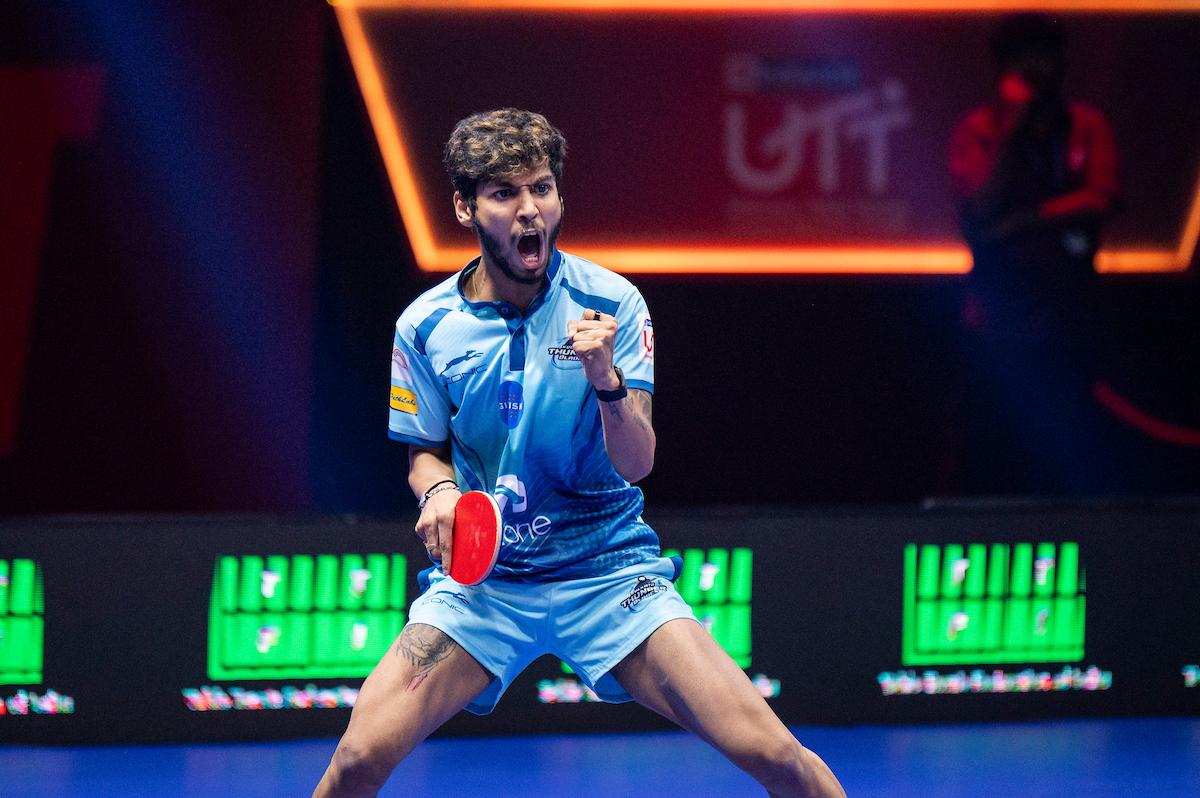
Flicking a switch: Soft-spoken in general, Ankur turns into a livewire at the table, sometimes even rubbing his opponents the wrong way.
| Photo Credit:
UTT
Perhaps it’s a trait he has imbibed from Kohli. He can’t choose among Kohli, Hardik Pandya and Zhang, should he be given the opportunity to meet one. “I am in awe of all of them. When I am not playing table tennis, I am either watching cricket or a Zhang Jike match,” he says.
During the IPL, when Punjab Kings checked into the same hotel as the UTT entourage, Ankur had hoped for Royal Challengers Bengaluru to join them in the final. But Kohli & Co. were in another hotel and Ankur’s demanding schedule meant he could neither seek an audience with his hero nor watch him in action.
Keeping it simple
But he knows he has plenty of time to fulfil his wish-list of meeting the trio. And he realises that rather than trying to make it happen — or spell out his aspirations of winning an Olympic or a Commonwealth medal — he wants to keep it simple.
“All I need to do is to keep improving and working harder with every passing day,” he says. “If I can do that, I know I will achieve much more than what I have. The goals can keep getting revised, I am only starting now. There’s a long way to go.”



